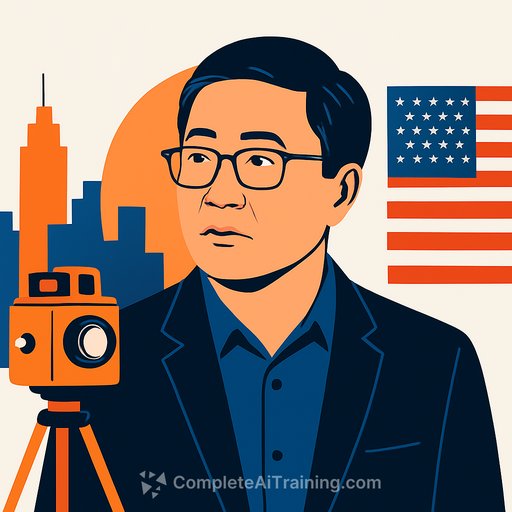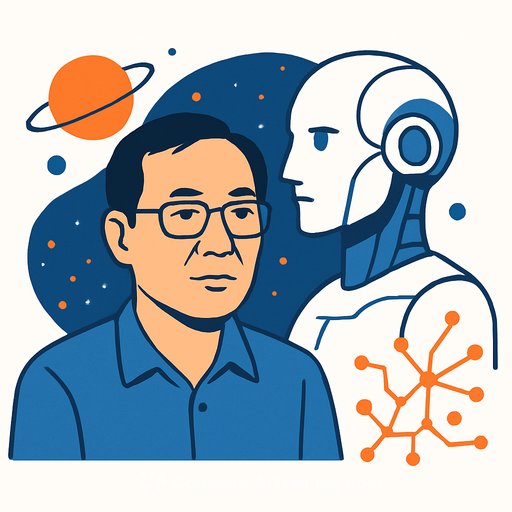Ken Liu on AI, Modernity, and What It Means to Be a Working Writer
Ken Liu has lived at the intersection of code, law, and literature. The author of the Silkpunk epic The Dandelion Dynasty and the award-winning collection The Paper Menagerie, he also translated the Chinese trilogy that opens with The Three-Body Problem. His vantage point is rare-and useful-for writers sorting out AI's place in their craft and careers.
His core idea is simple and sobering: AI is closer to the early camera than to a light switch. New tools don't erase old ones; they change how we compose, produce, and value the work. Expect a long transition, not an overnight flip.
AI as the "Camera Moment" for Writers
When photography appeared, painters didn't vanish. Composition, lighting, and story adapted to a new medium. The same is happening now with language models.
For writers, this means two tracks will run in parallel for years: human-first craft and AI-accelerated production. Your edge comes from knowing where each track helps-and where it hurts.
How AI Changes the Writing Process
- Use AI as a fast sketchbook, not a ghostwriter. Rough shapes and options first; the voice and final shaping stay yours.
- Treat prompts like briefs. State audience, intent, constraints, tone, and success criteria. The clearer the brief, the cleaner the draft.
- Keep a "voice baseline." Save 3-5 flagship pieces that define your sound. Compare AI outputs against them and edit toward your standard.
- Track provenance. Note where AI assisted, what sources it inspired, and what you rewrote. This protects your credibility and helps with client disclosures.
- Write the hard parts yourself: argument, structure, and metaphor. Let AI handle permutations, outlines, and alternative framings.
A Practical Workflow You Can Use Today
- Clarify the brief: Who is this for, what do they need, and what outcome matters? Write it in 5-7 bullet points.
- Outline with AI: Ask for three outlines with different angles. Merge the best pieces into one plan.
- Draft in layers: Write your thesis and key transitions yourself. Have AI expand supporting sections, then you compress, cut, and refine.
- Voice pass: Compare against your voice baseline. Edit for rhythm, specificity, and point of view.
- Fact pass: Verify claims, dates, and names manually. Log any data sources you used.
Originality, Credit, and the Business Side
Liu's background across software and law makes one thing clear: documentation matters. If you sell work to clients or publishers, keep notes on how AI assisted and which assets it touched. You'll look professional when questions arise.
When possible, source images and data with clear licenses, and avoid using private client material to train tools without permission. If AI significantly shapes a piece, discuss credits and disclosures up front-this avoids awkward conversations later.
Modernity and the American Story
Liu's fiction often blends myth and technology to ask what "being American" looks like in a layered, plural culture. That lens helps with AI too. The goal isn't to imitate a median voice; it's to assert your lived perspective with more leverage.
AI can surface lost threads-older metaphors, bilingual phrasing, overlooked references-and help you recombine them. The result isn't generic content; it's personal work with better scaffolding.
Skills That Age Well (Even as Tools Change)
- Taste: The ability to choose what to cut and what to keep.
- Structure: Clean arguments and narrative arcs beat clever sentences.
- Research: Find sources, cross-check them, and extract what matters.
- Systems thinking: Build repeatable workflows for briefs, drafts, and edits.
- Ethics: Clear lines on credit, consent, and authenticity.
Guidelines for Teams and Publishers
- Create a short AI policy: acceptable use cases, disclosure rules, and review steps.
- Keep a shared voice guide with samples, banned clichés, and tone notes.
- Run a "red team" pass on sensitive topics: bias, stereotypes, and legal risks.
- Budget for fact-checking. Speed without verification is a liability.
Why Ken Liu's Perspective Resonates
He operates across forms-novels, short stories, translation-and across domains-engineering, law, and storytelling. That breadth supports a sober read on AI: it expands the field without erasing the core. Writers who develop taste, structure, and ethical guardrails will outlast any single tool.
If you're new to his work, start with The Paper Menagerie, then sample his Silkpunk worldbuilding in The Dandelion Dynasty. For context on his translation work, see The Three-Body Problem and how it reframed global sci-fi discourse.
Next Steps for Working Writers
- Pick one project this week to run through the five-step workflow above.
- Build your voice baseline doc and keep it beside your briefs.
- Write a one-page AI use policy for yourself or your team. Revisit it monthly.
Learn more about Ken Liu: Official site | The Three-Body Problem (context)
Helpful Resources for Writers
The medium is shifting, but the mandate holds: make work that carries your mind on the page. Tools can help you move faster. Only you can decide where to go.
Your membership also unlocks:






